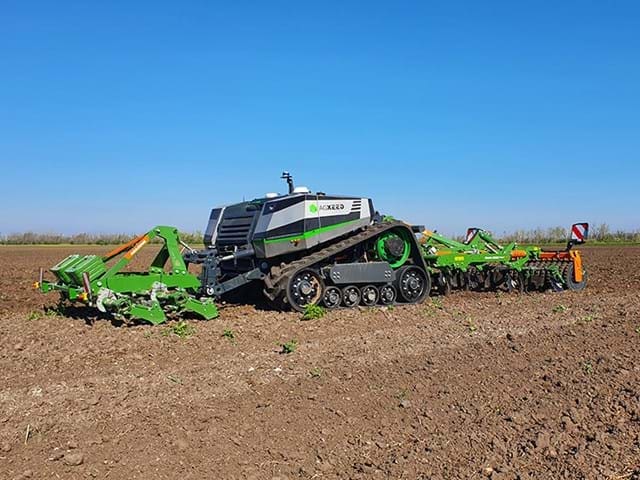

LEADING German agricultural technology manufacturers, CLAAS and AMAZONE, have increased their financial involvement with Dutch start-up, AgXeed, for the ongoing development and commercialisation of autonomous farm machinery.
The investment will provide CLAAS and AMAZONE with further access to autonomous technologies. In turn, AgXeed will benefit from the expertise of CLAAS and AMAZONE in product development, sales, service and international distribution.
AgXeed has already developed a number of AgBot platforms, including a three-wheeled version for orchards and vineyards, a four-wheeled version for cropping and a tracked version for use in the broadacre sector. Each platform is powered by a 74 or 156 hp or diesel-electric motor. Each six-tonne unit can be fitted with a suite of implements for use in a wide range of operations in broadacre, pastures and speciality crops.

Standard features include RTK steering guidance, electronic hazard and obstacle detection, adjustable track width, load-sensing hydraulics and a three-point linkage with a lift capacity of eight tonnes. The first models are slated for commercial release early next year via selected CLAAS dealerships in Germany and Switzerland.
CLAAS Harvest Centre General Manager – Product, Tim Needham, says AgXeed’s autonomous platforms are an ideal match for CLAAS and AMAZONE technology. “AgXeed is recognised as a European leader in autonomy and robotics,” he says. “CLAAS is recognised as a leader in powertrain management, operator assistance, machine optimisation, data transfer and interface systems that help to optimise productivity and efficiency. AMAZONE is acknowledged as a leader in cultivation and precision seeding, spraying and spreading systems. This combination of expertise opens up exciting new possibilities for constructing intelligent and autonomous solutions for arable farming.”
Tim says the collaboration could deliver huge benefits for Australian farmers in the not-too-distant future. “One of the greatest limitations facing agriculture in Australia is the scarcity of skilled labour,” he says. “Autonomous machines can perform time-consuming and often monotonous cropping operations, leaving farmers more time to deal with more important jobs. In many cases, autonomous machines can perform tasks more efficiently and accurately than humans via the use of artificial intelligence to determine job sequencing, monitoring and machine optimisation. The ultimate goal is to not only to reduce labour input but to achieve better agronomic outcomes, safely.”